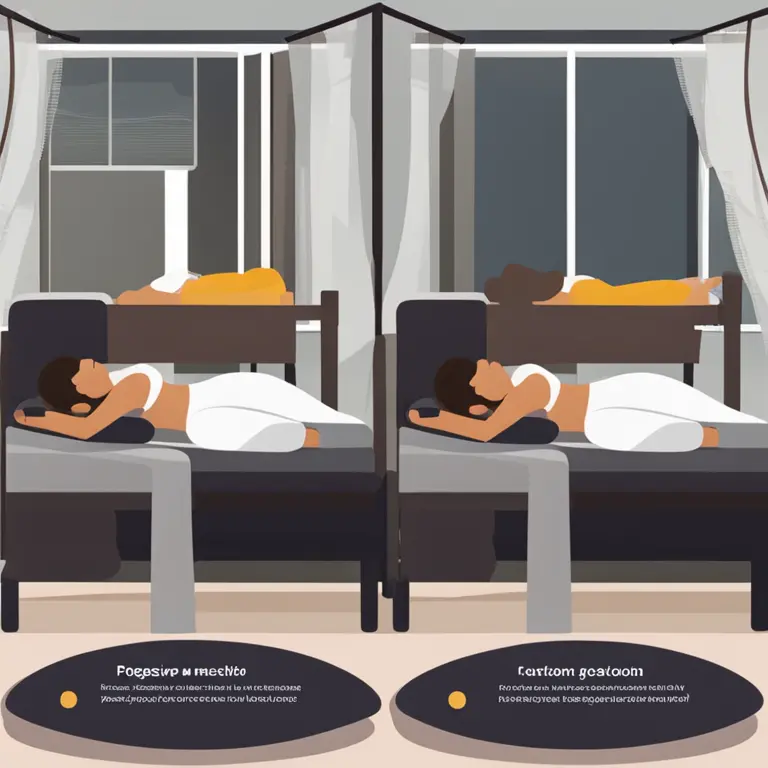
Mindful Management: Meditation Techniques for Diabetes
Discover effective meditation practices to help manage diabetes, promoting relaxation and better blood sugar control.
article by Hina Kurosawa
Mind-Body Connection in Diabetes
Diabetes management extends beyond diet and medication; it includes holistic practices that align the mind and body. Recent studies indicate that stress can exacerbate blood glucose fluctuations, underscoring the importance of stress management techniques. Meditation emerges not only as a relaxation tool but also as a potential ally in diabetes care. Inviting tranquility into the regimen may positively influence insulin sensitivity and glycemic control, showcasing the power of mental well-being in the battle against diabetes.

Starting with Breathwork
Breath-centered meditation forms the cornerstone of a mindful approach to diabetes management. Diaphragmatic breathing, a simple technique, entails deep breaths originating from the diaphragm, promoting relaxation and reducing cortisol levels. Practicing for a few minutes daily can help minimize stress-induced hyperglycemia. Begin by inhaling slowly through the nose, feeling the abdomen expand, and then exhale gradually through the mouth. This foundational practice paves the way to a calmer mind and a potentially more stable glucose level.

Progressive Muscle Relaxation
Another powerful meditation technique is Progressive Muscle Relaxation (PMR). PMR involves tensing and then relaxing different muscle groups, which can help pinpoint and release stress that might be affecting blood sugar. Starting from the toes and moving upwards, contract each muscle group for several seconds before letting go. This method is beneficial before bed, potentially improving sleep quality—a critical component for optimal diabetes management.

Mindfulness Meditation for Awareness
Mindfulness meditation encourages present-moment awareness, which can be particularly therapeutic for diabetics. By focusing on the now, individuals may become more attuned to their bodies' signals, such as hunger and satiety cues, helping to regulate eating and reduce unnecessary snacking. Devoting time to observe thoughts and feelings without judgment can also alleviate stress, potentially moderating the body's insulin response.

Guided Imagery and Visualization
Guided imagery and visualization allow individuals to harness their imagination to foster inner peace. Through this technique, one visualizes calming scenarios or pictures healthful bodily processes, which may positively affect physical health. For instance, envisioning the body adeptly regulating blood sugars can reinforce a mindset conducive to diabetes control, blending positive psychology with traditional management strategies.
Yoga and Meditative Movement
Yoga integrates meditative practices with physical movement, offering a dual benefit for those with diabetes. Specific yoga poses, combined with focused breathing, can lower stress levels and improve glucose metabolism. Moreover, the mind-body connection inherent in yoga fosters a discipline that can translate into better self-care and diabetes management practices.
Incorporating Meditation into Daily Life
It is essential to incorporate these meditation techniques seamlessly into everyday routines. Starting small, with sessions as brief as five minutes, can lead to a gradual build-up of practice without feeling overwhelmed. Consistency is crucial for reaping the benefits, and meditative moments can be found in everyday activities such as walking or even during glucose monitoring, transforming routine into reflective space.
Published: 2/12/2024
Modified: 2/12/2024
More predictions
Come back here soon to learn more about yourself and your future


Calming the Mind: Meditation Practices for Anxiety Relief
Discover effective meditation techniques designed to soothe anxiety and promote tranquility in our daily lives.


The Spectrum of Meditation Practices
Delve into the diverse world of meditation techniques to enhance mindfulness, focus, and tranquility in your daily life.


The Spectrum of Meditation Practices for Inner Harmony
Delve into the various meditation techniques designed to foster mindfulness, tranquility, and deeper self-awareness.